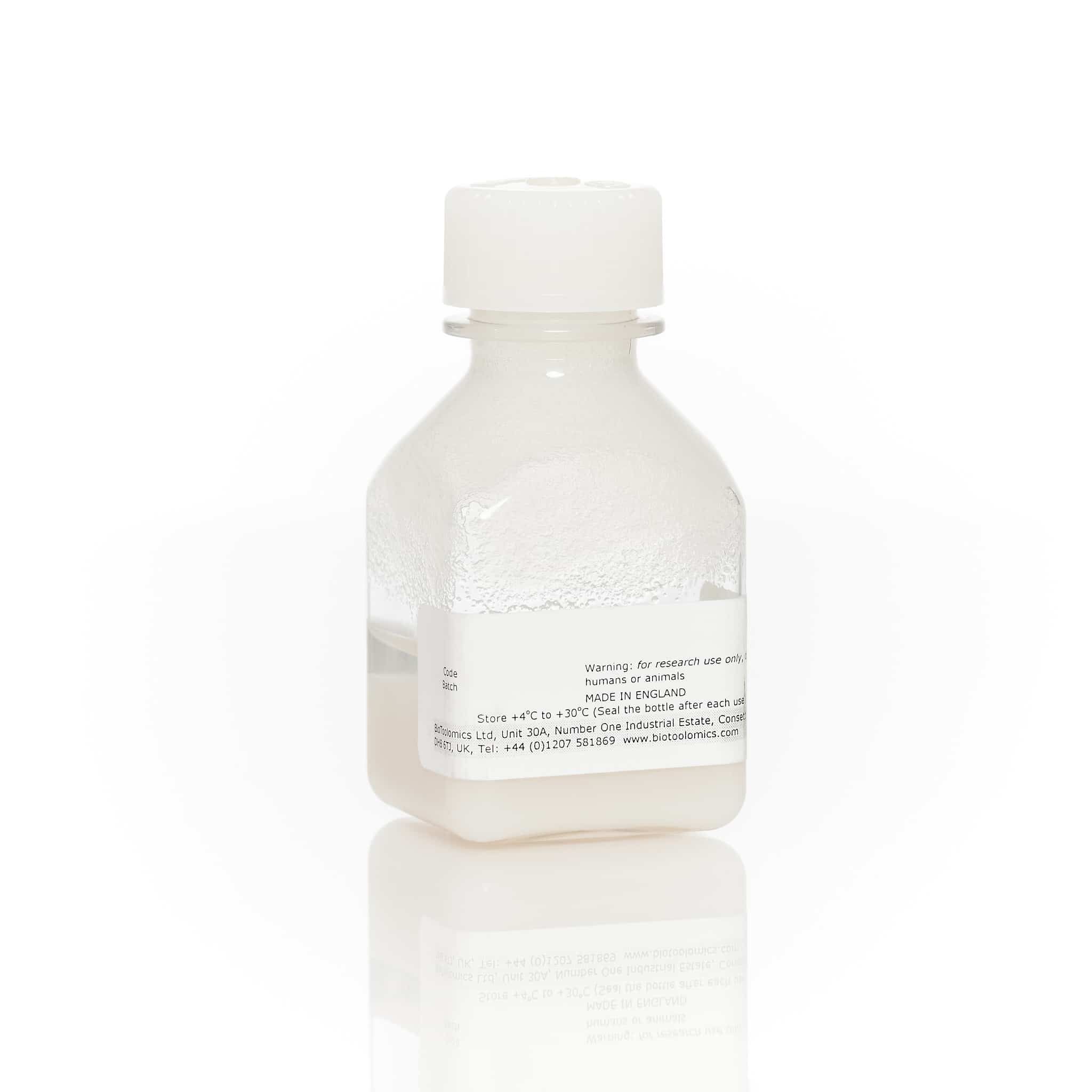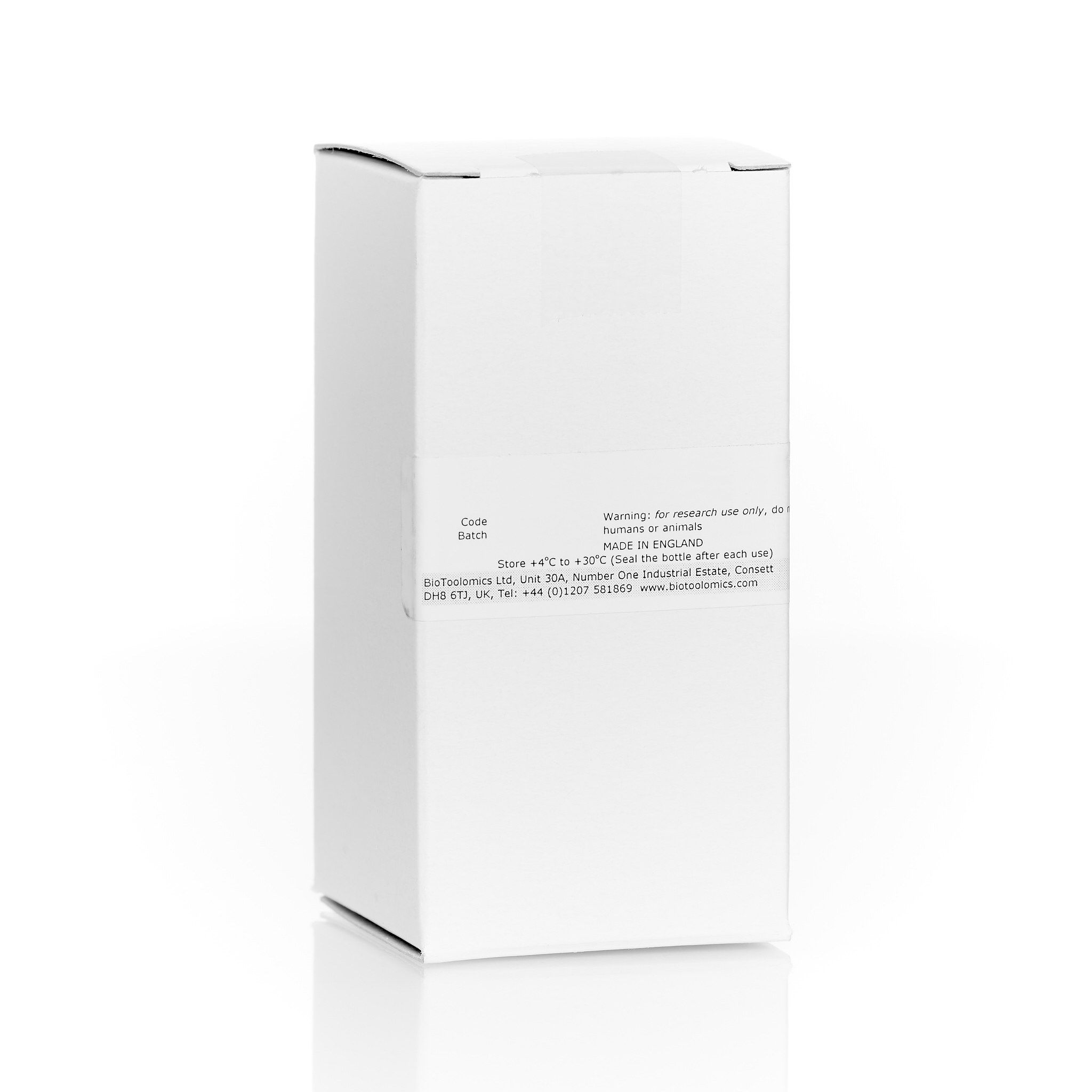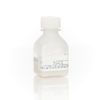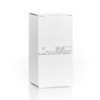Call for price
IMAC SepFast Large Beads has a particle size of 150 – 350 µm and is specifically designed and fabricated for purification of proteins from viscous and/or cell-containing crude samples in batch (stirred tank), gravity flow, or packed column mode. The base matrix is made of heavily cross-linked agarose.
Metal ions can be charged to the covalently attached chelating groups on the solid support. Leakage of metal ions is negligible.
Description
IMAC SepFast Large Beads has a particle size of 150 – 350 µm and is specifically designed and fabricated for purification of proteins from viscous and/or cell-containing crude samples in batch (stirred tank), gravity flow, or packed column mode. The base matrix is made of heavily cross-linked agarose.
Metal ions can be charged to the covalently attached chelating groups on the solid support. Leakage of metal ions is negligible.
IMAC SepFast Large Beads is supplied in non-charged form alone or with precharged metal ions as Ni SepFast Large Beads, Zn SepFast Large Beads and Co SepFast Large Beads.
IMAC SepFast Large beads or its metal charged format (e.g. Ni SepFast Large Beads etc) is highly stable and compatible with a wide range of chemicals commonly experienced in protein purification processes, which means that more flexible operations can be developed for the best performance.
Immobilised metal affinity chromatography (IMAC) using Nitrilotriacetic acid (NTA) has been widely employed as a powerful separation approach in the purification of a broad range of proteins and peptides. It is based on the specific interactions between certain transitional metal ions, mostly Ni2+, Zn2+ and Co2+ to the exposed amino acid surface chains containing histidine (or cysteine and tryptophane). The presence of several adjacent histidines such as (His)6- tag increases the affinity to immobilised metal ions. Increasingly, IMAC resins are employed for the purification of histidine-tagged recombinant proteins expressed in bacteria, yeast and mammalian cells. There are other applications of IMAC resins to purification of certain native non-tagged proteins as well, such as interferons, lectins, antibodies, serum and plasma proteins, peptides and peptide hormones.
Metal ions are immobilised to the carefully designed porous polysaccharide polymer supports via covalently attached strong chelating groups.
Additional information
| Weight | N/A |
|---|---|
| Dimensions | N/A |
| Class | |
| Volume | 25 ml, 100 ml, 1 litre |
| Particle size | |
| Matrix | Cross-linked 6% agarose |
| Functional group | |
| Total ionic capacity | >15 µmol/ml |
| Binding capacity | >40 mg/ml |
| Chemical stability | Stable in 0.01M HCl, 0.1M NaOH and 0.2M acetic acid tested for one week, Stable in 0.1M HCl and 1% SDS tested for 30 mins, Stable in 0.5 M NaOH and 30% acetic acid tested for overnight |
| pH stability | 2 – 14 (short term), 3 – 12 (long term) |
| Storage | 20% ethanol |



